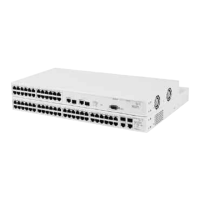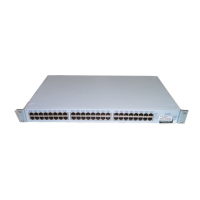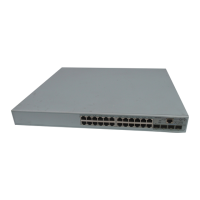92 CHAPTER 11: IP ROUTING
■ RIPv1 – Route information is broadcast periodically to other routers on
the network using the advertisement list for RIP-1 updates.
■ RIPv2 – Route information is multicast periodically to other routers on
the network using the multicast address of 224.0.0.9. This method
reduces the load on hosts that are not configured to listen to RIP-2
messages.
■ RIPv1 Compatible – Route information is broadcast to other routers on
the network using the advertisement list for RIP-2 updates.
■ RIPv1OrRIPv2 – Both RIP-1 and RIP-2 route information can be
received by the Switch.
■ doNotSend – The Switch will not broadcast (or advertise) RIP updates.
■ doNotReceive – The Switch does not process (or passively learn)
incoming RIP packets.
The doNotSend and doNotReceive modes are also referred to as one-way
learn and advertise modes.
Poison Reverse
Poison Reverse is a RIP feature that you use specifically with a scheme
called Split Horizon. The Switch disables Poison Reverse by default.
Split Horizon avoids the problems that reverse-route updates can cause.
Reverse-route updates are sent to a neighboring router and include the
routes that are learned from that router. Split Horizon omits the routes
that are learned from one neighbor in the updates that are sent to that
neighbor (the reverse routes).
Poison Reverse is essentially another layer of protection against
advertising reverse routes.
■
When you enable Poison Reverse, the Switch advertises reverse routes in
updates,
but it sets the metrics to 16 (infinity). Setting the metric to
infinity breaks the loop immediately when two routers have routes
that point to each other.
■ When you disable (default mode) Poison Reverse, such reverse routes
are not advertised.
You can disable Poison Reverse because it augments what Split Horizon
already does, and it puts additional information that you may not need
into RIP updates.
